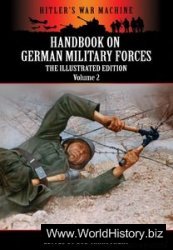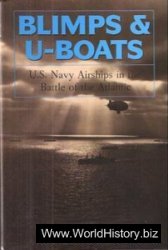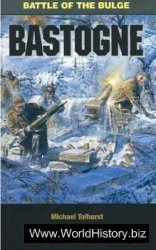After the Arab-Berber conquest of the Iberian peninsula (starting in 711) and against the background of a shifting political landscape, warfare was endemic. War characterized relations both among Christians and Muslims as well as between Christians and Muslims; it was opportunistic rather than religious. Although the political legitimation of being heirs of the Visigoths was formulated in the late ninth century at the court of Alfonso III of Leon, the idea of religious war emerged only in the late eleventh century and became the prevalent Christian ideology in the twelfth and thirteenth centuries. It was only then that Christian advances came to be seen as a ‘reconquest’ from Muslims of lands rightfully belonging to Christians. This transformation can be illustrated through the example of Rodrigo Diaz de Vivar, better known as El Cid (c.1043-99). During his lifetime, Rodrigo was one of the many warlords looking for booty and building his own power. A Christian, Rodrigo served Kings Sancho II, then Alfonso VI of Castile until he was exiled (1081), when he went into the service of the Muslim ruler of Saragossa. He exacted tribute and exploited military opportunities; eventually he conquered Valencia for himself. By the early thirteenth century, legend turned him into a zealous Christian hero, fighting for the faith (see Chapter 5). The context was the crystallization of Iberian Christian identity, at least in royal and ecclesiastical circles.
The Umayyad caliphate lost effective power after 1008, and gradually Muslim principalities (Taifas* or ‘party-kings’) took its place.
Christian rulers from the north exploited the lack of strong Muslim central power, and exacted tribute (parias) as protection money. Rulers of the Christian kingdom of Navarre and soon of the emerging Leon, Castile, and Aragon also enlarged their territories. They incorporated empty lands contiguous to their realms, and led invasions into Muslim territories. Christian advances, helped by tribute from Muslim rulers, were followed by periods of consolidation and reverses caused by Muslim triumphs. The capture of Toledo in 1085 by Alfonso VI of Castile and the beginnings of crusading to the Levant opened the way for a new understanding of local warfare. At the start of the crusades, Pope Urban II (1088-99) pronounced Muslims in Iberia to be just as much the enemies of Christians as Muslims in the Levant. Subsequently the papal grant of crusader privileges to Iberian crusaders fluctuated, sometimes postulating an equal, other times a lesser status to crusades to Jerusalem, designating only some of the wars there as crusades; nevertheless, crusader thought undoubtedly left a deep impact on interpretations of Iberian warfare. Spanish military orders were created and received papal approval: Calatrava (1164), San Julian del Pereiro (Alcantara) (1175), and Santiago (1176).
During the twelfth century the religious understanding of these wars was consolidated, a process to which French influence at court, pilgrims to the shrine of Saint James at Compostela, crusaders arriving from other parts of Europe (especially the Languedoc and Burgundy), and most importantly the popes all contributed. For Iberian kings the ideology of the Reconquista became an important diplomatic tool, especially in relation to the papacy as a basis for demands of funds and privileges. This ideology, however, did not put an end to peaceful relations between adherents of the two religions in either everyday coexistence or alliances.
Christian-Muslim interaction was influenced not only by Christian ideology and practice but also by Muslim activities. In response to the Christian conquest of Toledo, Almoravids from Morocco were invited into the peninsula in 1086 and defeated Alfonso VI. They once again centralized Muslim rule, establishing control over Taifa kings. When the Christian conquests started again in the mid-twelfth century, the Almohads invaded from North Africa (1146), subjugated the Almoravids and went on to attack the Christians. Muslim victory at Alarcos in 1195 checked the Christian advance. In its aftermath, Pope
Innocent III called for a crusade and, as its necessary precondition, for peace among the Christian kings of Iberia. A significant turning point came with the Christian victory of Las Navas de Tolosa (1212), celebrated as a victory for the whole of Christendom. It opened Anda-lucia to conquest, as Muslim Iberia fragmented once again into rival principalities. The first half of the thirteenth century increasingly provided material for Christian celebration. James I of Catalonia-Aragon (1213-76) and Ferdinand III of Castile (1217-52, from 1230 also king of Leon) conquered most of the peninsula by the mid-thirteenth century, notably Valencia (1238) by the Aragonese, and Cordoba (1236), Seville (1248), and Cadiz (1262) by the Castilians. After 1264, only Granada remained in Muslim hands, despite attacks by the Marinids of Morocco after 1275 and revolts of subject Muslims in the newly conquered areas. Over 400,000 sq. km. were incorporated into Christian Iberia.
Conquest was not achieved by sheer force alone. Military confrontation was accompanied by negotiation; Muslims capitulated in many cases, and surrender treaties were drawn up granting rights to the Muslim population. Yet the life of the Muslims changed even when these were honoured. Symbolic of this was the transformation of the main mosques of large cities such as Valencia, Cordoba, or Seville into churches after Christian conquest as a sign of victory. Muslims under Christian rule (mudejars) progressively lost their freedoms. Learned elites often emigrated, and by the early sixteenth century Muslims were forced to convert or leave. Nonetheless, during the thirteenth century they contributed to the consolidation of Christian states—for example, by continuing to work the agricultural irrigation system in Valencia, or by testifying to the existing boundaries of estates.
It was not only Muslim Iberia that changed owing to the progress of Christian conquests: the eleventh, twelfth, and thirteenth centuries were formative for the Christian states themselves. Iberia’s political map underwent radical changes over 300 years. Asturias, then the Asturo-Leonese kingdom where finally Leon took the leading role, Navarre, Aragon, Catalonia, Castile, and finally Portugal emerged. With its conquest of Toledo, Castile gained ascendancy over Leon; the two were united first temporarily in the early twelfth century until 1157, then permanently in 1230, thus forging a powerful Christian polity. The dynastic union of Aragon and the counties of Catalonia in the late 1130s created the other major power of the peninsula, the Crown of Aragon. Navarre lost access to further conquests from the Muslims, and in the treaty of Tudillen (1151) rulers of Aragon and Castile even decided to divide Navarre itself, but this project failed. In the late thirteenth century, the French king became the ruler of Navarre. Counts of Portugal strengthened their power during the twelfth century; in 1137 the count’s autonomy was accepted by Alfonso VII of Castile-Leon. Count Afonso Henriques started to call himself king and gained de facto independence from Leon when he declared himself the vassal of the Holy See in 1143 (the pope started to address him by the royal title in 1179). Thus a new kingdom emerged, enlarging its territory by continued conquests from Muslims: in 1147 Lisbon was annexed, followed by the incorporation of Alcacer do Sal (1158) and Badajoz (1169). The French king had claims to Catalonia until 1258, the Aragonese king to many lands in Languedoc and Provence, a conflict of interests only partially resolved in the late thirteenth century. Overall, rulers strengthened their own power as they expanded and consolidated the frontiers of their kingdoms.
Iberia differed from northern and central Europe: this was not a new society to be converted and incorporated into Christendom. Existing Christian kingdoms at the beginning of the period were the locus of expansionary will. Although there was an influx of warriors from north of the Pyrenees, the Reconquista was increasingly manned by locals. The church in Iberia funded the reconquest, especially during the thirteenth century. Political structures were not identical in the different kingdoms. The Castilian king had a centralized administration and held more effective power than his counterpart in Aragon, who was the head of a confederation with separate institutions and without jurisdictional unity. During the twelfth and thirteenth centuries, royal courts were transformed into specialized departments staffed by professionals; local administration also developed in the conquered areas, often borrowing Muslim practices and officials. Cortes, assemblies of the estates, developed in Catalonia and Castile from the late twelfth century, in Aragon and Navarre during the thirteenth century. They included nobles, ecclesiastics, and representatives of towns, and started to participate in government. In the late thirteenth century, kings began to formulate legislation based on Roman law, which gave rise to the nobility’s opposition to royal power. Nobility was based on descent, and was divided into two or three strata, the lowest often resembling peasants in their economic circumstances. Despite huge economic differences, nobles were juridically equal, and exempt from taxation. Cities in the newly conquered areas were often given charters of privileges (fueros*) in exchange for consent to taxation and the city militias’ participation in defence. Cities also became the allies of kings in political life against the nobility in thirteenth-century Castile, thus receiving urban autonomy. Economic differences between kingdoms were partly linked to the size of the population. Castile had a large sector of extensive agriculture, based on animal raising. Agricultural irrigation and the mercantile sector were important in the Crown of Aragon.
Historians have intensely debated the interpretation of Iberia’s socio-economic characteristics: was Iberia a ‘frontier society’, shaped primarily by military expansion and unregulated conditions, or a ‘feudal’ one, moulded by relations between lords and men, kingship, and the tenure of land in exchange for service? In fact, Iberia resembled other medieval European kingdoms, while displaying some local specificities. The key issues in the debate are the militarization of Iberian society and the consequences of the process of expansion. Although it is true that warfare was an important feature of life in Iberia, medieval society was heavily militarized in the whole of Europe. The settlement of conquered areas in Iberia was a constant problem. The lack of population and thus of manpower led to the promulgation of privileges to draw settlers. A variety of solutions was adopted. In Castile, conquered lands were divided into units where the king’s delegates exercised administrative, judiciary, and military functions. In Aragon in the eleventh and early twelfth centuries the grant of large estates attracted nobles to settle. The creation of cities, even through granting pardons to murderers if they settled, and of military orders was an equally important means of repopulation. Muslims played an important part, especially in Valencia, where they far outnumbered Christians; indeed, Muslim immigration was encouraged, even by military orders, to sustain the region’s agriculture. Yet attracting settlers by privileges occurred in many other areas of Europe, including France. Cultural exchange with Muslims and Jews influenced Christian culture, as architecture, and translations of Greek works via Arabic, attest (see Chapter 5). At the same time, however, ecclesiastical structures were expanded into the newly conquered areas. Ecclesiastics served kings in the chancery, in diplomacy, and by composing chronicles recording the deeds of kings. The vernacular was already widely used in the thirteenth century for literary compositions as well as for charters. Finally, significant differences occurred between the development of different Iberian kingdoms. ‘Frontier society’ therefore does not work as a blanket explanatory concept for medieval Iberian history.
The conquest of the peninsula also paved the way for further maritime expansion. The Crown of Aragon eventually created a maritime empire in the western Mediterranean, the first step of which was the Catalan conquest of the Balearic Islands (1229-35). It opened the way for Atlantic exploration by Portuguese and Castilians in the fourteenth century. Castilians and Aragonese planned but failed to conquer Morocco and North Africa in the late thirteenth century, but Europeans continued to trade with North Africa, having contact only with coastal areas, not the interior.
Another area of the Mediterranean was incorporated into Latin Christendom early in the period. Normans displaced Byzantine rule in southern Italy, conquering Calabria and Apulia; they also conquered Sicily from the Muslims (1061-91) and created a centrally organized powerful kingdom. Roger II (1105-54, crowned king 1130) established the superiority of the ruler’s justice, created an effective administrative system, and extended the range of royal control over diverse aspects of government, including the collection of revenues from trade and the local Church. He brought part of North Africa under his power, from political and economic, rather than religious, motives. He employed Muslim mercenaries, and drew on Greek, Muslim, Latin, and French traditions. A variety of peoples mixed in the kingdom; their religious observance, local institutions, and culture including language were left undisturbed. Historians have debated the nature of Byzantine and Muslim influence: whether it just had an impact on externals or fundamentally determined the nature of the polity. Rogers’s heirs faced a variety of external threats and internal rebellions. In 1194 Sicily was conquered by Emperor Henry VI, whose son Frederick II eventually established strong monarchy in the kingdom of Sicily.




 World History
World History









